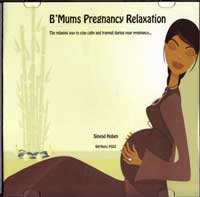Birth Injuries: Treatment of Perineal Tears
Perineal tears frequently occur during the delivery of a baby. As with all birth injuries, it is important that any damage caused to the perineum during labour and birth is carefully examined immediately following delivery of the baby so that appropriate treatment can be undertaken.
Obviously, the second stage of labour should aim to prevent any injuries occuring in the first place, but this is not always possible. It should be noted though, if caregivers suspect that a tear is likely to be severe then they should take evasive action where possible; this may entail performing an episotomy, ie, making a small incision in the perineum, the area between the vagina and anus, in order to try to prevent a more severe injury occuring.
Although it is known that a natural tear can be less painful and may heal more quickly and with fewer complications than a surgical cut, where a midwife or doctor thinks a natural tear will be more severe or may cause more damage than a surgical cut, then this action is often the best course to take.
Depending on the type of perineal injury suffered the following will be undertaken:
- Immediate Repair: If you have suffered a first or second degree perineal tear, then it will be repaired immediately following delivery of the placenta. The perineum will be numbed with a local anaethetic and the mother may continue to use gas and air during the repair.
- Delayed Repair: If, for some reason the tear is not diagnosed at the time of birth, or the damage is so great that the tear is classed as a third or fourth degree birth injury then the mother will be treated with antibiotics to try to control any subsequent infection. The repair will then be performed as soon as it is possible to do so.
Repair of a Third Degree or Fourth Degree Perineal Tear
Where a woman has suffered from a third or fourth degree perineal tear, the tear will be repaired as soon as possible, sometimes in the birthing room or alternatively in theatre. It very much depends on the standard practice of your hospital and the facilities/ surgeons available.
In the mean time the wound will be inspected regularly and treated appropriately to ensure infection does not take hold.
It is normal for the repair to be performed under a general anaesthetic, although it can also be performed under epidural or with the use of a pudendal block.
Related Articles
Treat Yourself to Me Time!

For the ultimate pregnancy treat, buy our Pregnancy Relaxation CD or download our Pregnancy Relaxation mp3
. Lie back, relax and connect with your unborn baby in the privacy of your own home.
Or, if you're currently struggling with a busy lifestyle and the added demands of parenting, try our Perfect Relaxation for Parents mp3 - take time out for yourself and awaken refreshed and ready to face whatever life throws at you!
Also by BreastfeedingMums
Books We Love!
Support Us!
Write for Us
If you would like to contribute a pregnancy or breastfeeding poem, story or photos, or a miscarriage poem or story, just contact us and we'll add it to the site. Thanks.

